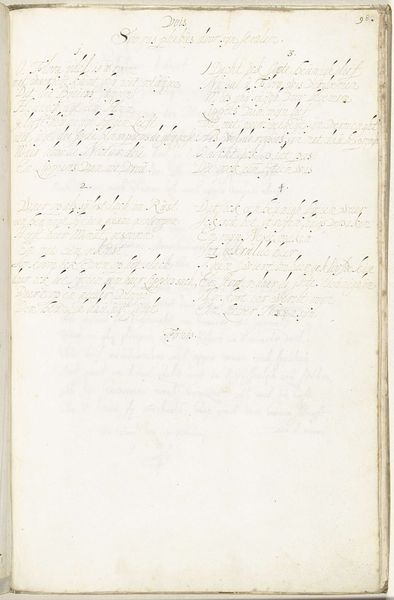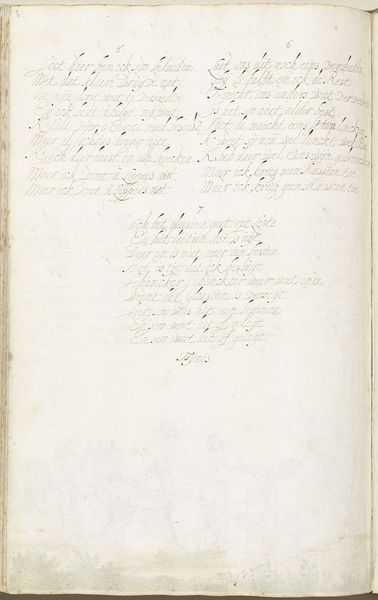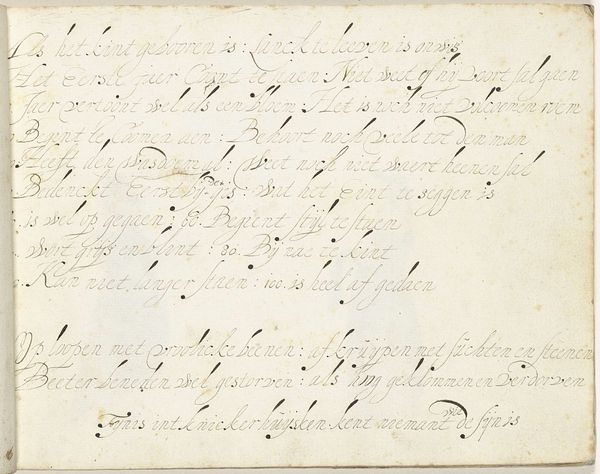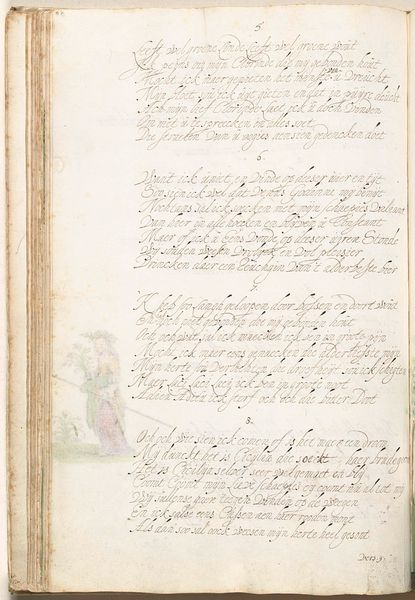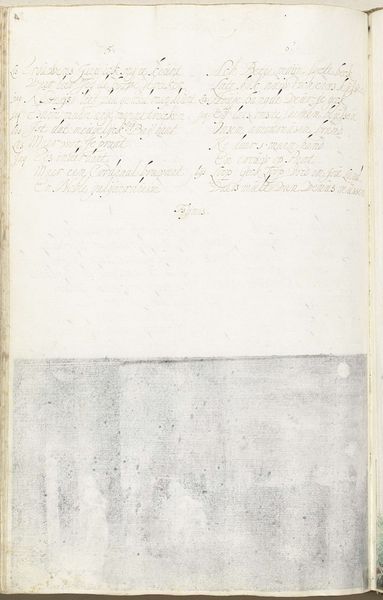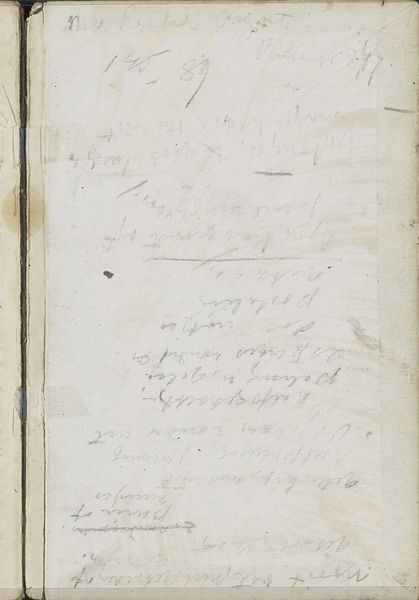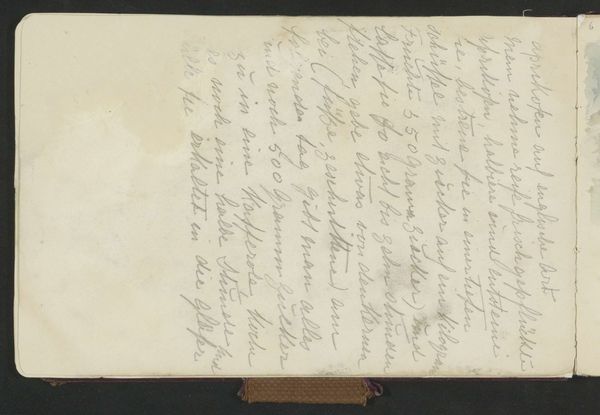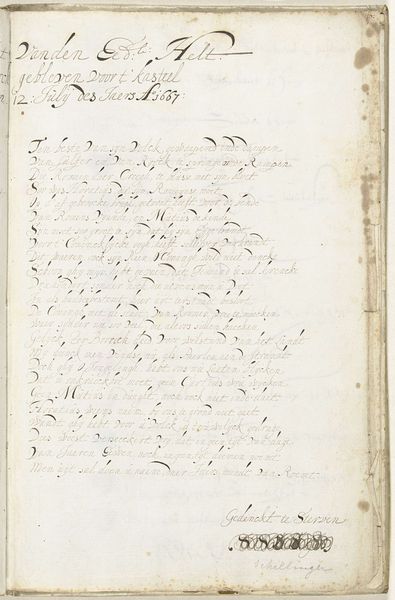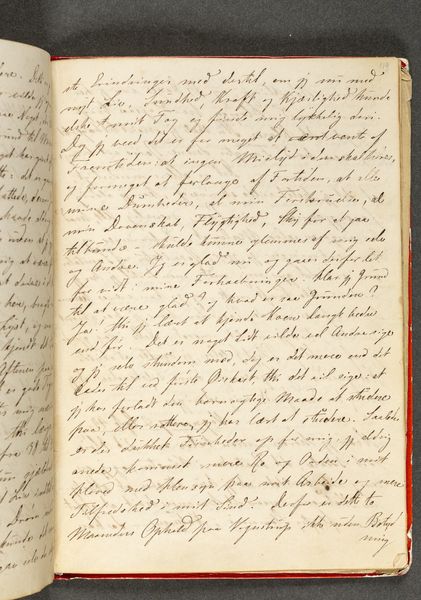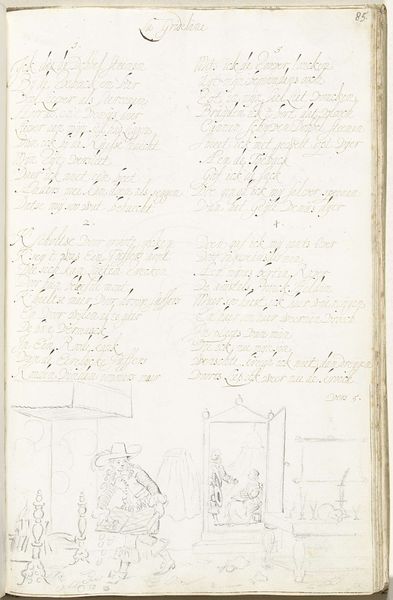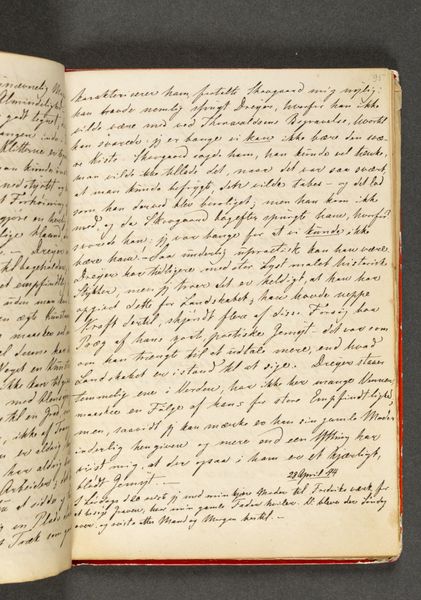
drawing, watercolor, ink
#
portrait
#
drawing
#
narrative-art
#
baroque
#
dutch-golden-age
#
watercolor
#
ink
#
genre-painting
#
miniature
#
watercolor
Dimensions: height 313 mm, width 204 mm
Copyright: Rijks Museum: Open Domain
Curator: The detail in this watercolor and ink drawing immediately strikes me; it's such an intimate glimpse into private life. Editor: You've homed in on a crucial element. This is "Jonge vrouw in bed met liefdespijn," or "Young Woman in Bed with Lovesickness," made around 1653 by Gesina ter Borch. Ter Borch really captured a moment rife with personal feeling, but she has also delivered a social commentary. Curator: Ah, Gesina ter Borch, a fascinating artist working within the confines of 17th-century Dutch society. Given the constraints placed on women's labor and access to artistic training at this time, one must wonder, what was the workshop environment where she mastered these materials and methods? Editor: Indeed, think about the narrative it presents. The figure languishes in bed, attended by what appears to be a doctor and family, while a Cupid-like figure points an arrow towards her. You read this miniature illustration like an image of conventional societal assumptions regarding the causes and treatments of such a "lovesickness." Curator: Absolutely, and the very materiality of the piece speaks to that too. The delicate use of watercolor and ink, a technique often associated with domestic crafts and private expression, hints at both the vulnerability of the lovesick subject and Ter Borch’s negotiation of craft with higher artistic intention. It subtly interrogates how the lives of women were literally constructed as artworks in this historical moment. Editor: A keen observation. And note how the composition, confined within what appears to be a book or album page, creates a sense of enclosure, almost trapping the subject in her ailment and this little diorama. This speaks to the contemporary attitude surrounding such emotional distress. Curator: Precisely! By meticulously employing watercolor techniques in such an accessible fashion—this becomes a critique of the limitations placed upon women’s bodies, emotional displays, and the tools accessible to express agency during Ter Borch's era. The love becomes a symptom of constrained circumstances. Editor: Looking at the piece again, you've illuminated dimensions I hadn't considered; thinking through how these conventions, captured using ink and brush, truly mirror societal structures of the time… it's eye-opening. Curator: I’m glad we could unravel a little bit more of the artwork. Ter Borch offers insights on the daily struggles of women while repurposing what constitutes conventional Dutch art production!
Comments
No comments
Be the first to comment and join the conversation on the ultimate creative platform.
